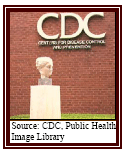 |
|
 |
 |
 |
Introduction
Hygeia's Constellation
Previous |
Next

On the lawn in front of the Centers for Disease Control and Prevention
(CDC) in Atlanta, Georgia, stands a small stone sculpture. Every day,
hundreds of people pass by as they enter the headquarters of one of the
world’s premiere public institutions.2 Few
notice the statue, and even fewer realize that it is a likeness of
Hygeia—the Greek goddess of goodhealth. Although her face may
be unknown to the average visitor, and even to most experts who profess
to do herwork, Hygeia’s influence touches each of our lives, as
it has for centuries in the still-unfolding story of our endeavor to
become safer, healthier people. The first public institutions ever to
focus formally on protecting population health were organized in England
in the mid-19th century, spreading quickly thereafter
throughout Europe, North America, the Pacific, and beyond (Rosen, 1993).
By many measures, the ensuing years proved to be the healthiest in human
history, due in large part to the deliberate work of these new
organizations and the social movements they helped direct (Krieger and
Birn, 1998; Szreter, 2002). Former CDC Director Jeffrey Koplan recently
summarized this remarkable period of discovery and action by observing
that “public health achievements in the 20th century dwarfed
those that had accumulated in the previous 19” (Koplan, 1999:4). And
Richard Rhodes, winner of the Pulitzer prize for his inquiry into the
scientific drive behind nuclear warfare, declared that “public health is
probably the most successful system of science and technology combined,
as well as social policy, that has ever been devised. . . .It is, I
think, a paradigmatic model for how you do concerned, humane, directed
science” (Rhodes, 2002). It is these qualifiers—concerned, humane,
directed—that distinguish public health work from other forms of
intellectual pursuit and public action, which tend to be narrowly
focused, inhumane, or disorienting. These qualifiers point to the
distinctive democratic commitments, moral considerations, and
navigational sensibilities that animate effective health leaders and
align them with the deep, transformative tradition of pragmatism
(Addams, 2002; Dewey, Hickman, Alexander, 1998; West, 1989). Moreover,
this pragmatic character of the field still remains strong, despite the
rise of powerful undercurrents during the 19th and 20th
centuries to position positivism as the main philosophical orientation
for studying health policy. Despite all of their promise for
achieving greater health gains (Ezzati, Hoorn, Rodgers, et.al.,
2003), and despite all the current enthusiasm about finally confronting
entrenched inequities (Evans, 2001; Gwatkin, 2000; Institute of
Medicine, 2002b; Leon and Walt, 2001; Northridge, Stover, Rosenthal,
et.al., 2003; Wilkinson, 1996), our efforts toprotect the
public’s health in the modern world are transforming and destabilizing
in ways that have only begun to be acknowledged (Beaglehole and Bonita,
2004; Fielding, 1999; Institute of Medicine, 2002a, 2002c). An
ever-expanding body of knowledge about opportunities for protecting
health and preventing disease—which are now known to exist everywhere
from the genetic to the ecological—is offset by the fact that much of
this knowledge is never used (Green, 2006; Green and Johnson, 1996;
Institute of Medicine, 1997); and it is further undermined as great
achievements of the past either erode or become dangerously fragile in
their modern context. Since the mid-20th century, for
example, there have been sharp declines in the effectiveness of several
formerly powerful health protection measures. This was the case for two
of our most significant advances: drug therapy for controlling
tuberculosis and the use of DDT for preventing malaria (Rosenberg,
2004). Microbial resistance, in the case of TB, and concerns over
harmful environmental effects, in the case of DDT, eroded the
effectiveness of these once-treasured interventions. These examples are,
of course, just two chapters in a much longer and more subtle story.
Numerous other instances of health protection measures that have lost
their effectiveness can be traced to an array of complicated physical
and social trends, including such phenomena as demographic and
epidemiologic transitions, the emergence of new pathogens, increasingly
pervasive forms of violence, and the spread of transformational new
ideas and new technologies across virtually all spheres of human
existence. In the past few decades alone, these and other forces of
change have introduced grave new threats, as well as unprecedented
opportunities for precisely the kind of concerned, humane, directed
action that is the hallmark of public health work. In this precarious
position, with our existing health protection infrastructure in flux
(Baker and Koplan, 2002; Baker, Potter, Jones, et.al., 2005;
Centers for Disease Control and Prevention, 2000b) and with all of our
lives—indeed with life itself—in the balance, what exactly is Hygeia’s
work? Who does it? How strong must it be? Where is it leading?
2. As an entity of the United States government, the CDC sits squarely in the public sphere. But that organizational placement is not all that qualifies it as a “public institution.” Here, and throughout this report, the phrase public institution refers to those agencies or organizations, either governmental or non-governmental, that adhere to democratic norms and actively advance policies and practices that support a strong public sensibility.
Previous |
Next Back to top
Page last reviewed: January 30, 2008
Page last modified: January 30, 2008
Content source: Division of Adult
and Community Health,
National Center for Chronic Disease Prevention and Health Promotion
|
 |